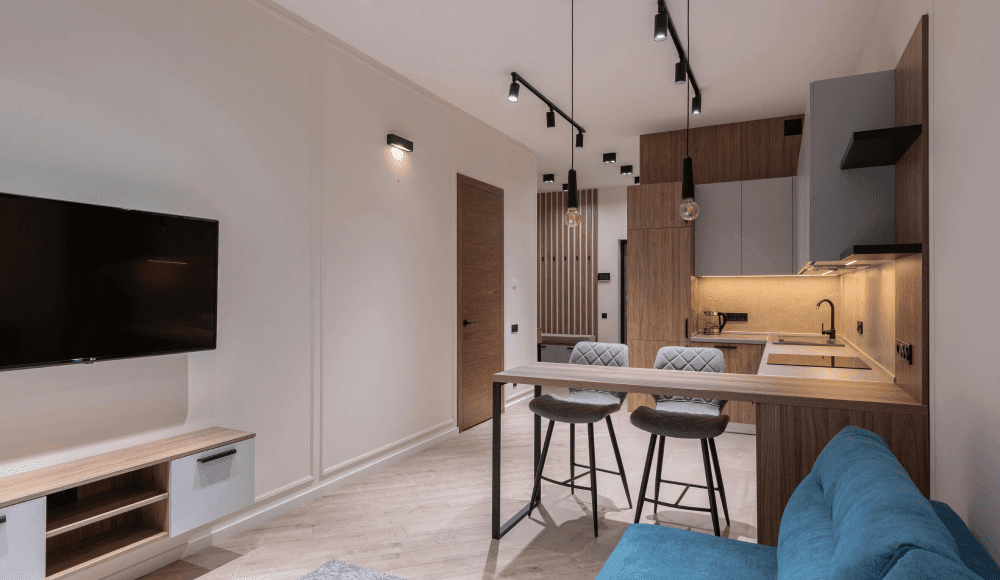Understanding Hard Money Loan Terms: A Quick Guide for Flippers

Andrew Mokotoff
Jun 16, 2025
9 min read
Introduction
Hard money loans are popular with house flippers because they provide fast, flexible financing for buying and renovating properties. However, they work differently from regular mortgages. To avoid costly surprises, it’s crucial to understand the key terms and financial mechanics of hard money loans. Below, we break down the essentials – from interest rates and points to draw schedules and loan durations – in plain language.
Interest Rates: Annual vs. Monthly (and Interest-Only)
Hard money loan interest rates are higher than conventional mortgage rates, often in the range of 8% to 15% per year. Importantly, that percentage is an annualized rate, even if some lenders quote it as a “monthly” rate. For example, a 1.5% per month interest quote actually means about 18% per year (1.5% × 12 months). Always clarify the annual interest rate so you can accurately calculate your costs.
Most fix-and-flip loans charge interest-only payments each month, with no principal reduction during the term. This means your monthly payment only covers the interest (e.g. 12% annual interest on $100,000 = $1,000 per month). Interest-only payments keep monthly costs lower than an amortizing loan, but you will owe the full original loan amount at the end (a balloon payment). Plan your project so you can pay off the principal – typically by selling the flipped property or refinancing – when the loan term ends. The good news is you only pay interest for the time you actually hold the loan, so a quick flip can reduce total interest paid. For instance, paying off a 12% loan in 6 months would accrue roughly 6% of the principal in interest (half of the annual rate). Just remember that hard money interest is calculated yearly but paid monthly, and budget accordingly.
Draw Schedules: How Rehab Funds Are Released
If your hard money loan also finances renovations, be aware of how draw schedules work. Lenders don’t give you the full rehab budget as cash upfront. Instead, rehab funds are disbursed in stages (draws) as the work progresses. The loan agreement will outline a draw schedule tied to your scope of work – essentially a plan that says when you complete X part of the project, the lender will release $Y in funds.
In practice, this means you must front the cost of each phase of the rehab, then get reimbursed by the lender for that completed work. For example, you might pay contractors to demo and frame a house out-of-pocket, then once that is done, you request a draw for those costs. The lender will usually verify the work (often by sending an inspector or reviewing receipts) before releasing the next batch of money. This protects the lender and ensures funds are used for the property. Plan for the first round of renovations to be self-funded – you’ll need enough cash (or credit) to cover initial repairs until the lender reimburses you. Also note that interest starts accruing as you draw funds; you typically pay interest only on the money that has been disbursed, not on the entire rehab budget that’s still held back.
Many hard money lenders charge a small fee for each draw, such as $100 to $300 per draw, to cover inspection and processing costs. Fewer draws can save you money on these fees, so work with your contractor to structure a sensible draw schedule. For instance, instead of five tiny draw requests, you might plan for two or three larger draws if you can finance bigger chunks of work upfront. Consolidating draws can minimize fees, but be sure you can carry the larger upfront expenses and still pay your monthly interest in the meantime. The key is to understand the lender’s draw process and timeline before you start – ask how to request draws, how quickly they pay out, and what documentation is required. This way, your project won’t be delayed waiting on funds, and you won’t be surprised by any draw-related charges.
Loan Terms and Typical Durations
Hard money loans are short-term loans by design. For fix-and-flip investors, the loan term is usually around 6 to 12 months. Some lenders might extend up to 18 or 24 months, and others offer initial terms as short as 3 months or as long as 2–3 years in special cases. However, the most common duration is one year or less, because flippers aim to renovate and sell the property quickly. This short term is actually a benefit: you’re not paying high interest for long, and the lender reduces their risk exposure.
Be sure you know when your loan comes due and if there are any options to extend. Many hard money lenders will grant a 3- or 6-month extension for an extra fee or a higher rate if your project needs more time. Budget extra time as a cushion – renovations often run over schedule, and selling a house can take longer than expected. If your 6-month loan might realistically need 9 months, talk to the lender about extension terms upfront so you’re not hit with surprise penalties. Also, because these loans are short, having a clear exit strategy is critical. Your exit is how you’ll pay off the loan – typically by selling the flip or refinancing into a longer-term mortgage (for example, if you plan to keep the property as a rental). The lender will expect full repayment at the end of the term (remember, none of the principal was paid down monthly), so you must close your flip or secure new financing by that deadline. In summary, treat hard money as a bridge to get you through acquisition and rehab, and have a plan to promptly bridge out of it. The faster you pay it off, the less total interest and fees you’ll end up paying.
Avoiding Common Misunderstandings and Pitfalls
Even experienced investors can misjudge certain aspects of hard money loans. Here are some common misunderstandings to avoid:
Assuming Monthly Payments Reduce the Loan: They don’t. With interest-only hard money loans, your payments do not chip away at the principal. If you borrow $250,000, you’ll owe the full $250,000 back at the end, no matter how many interest payments you made. Many newcomers used to traditional mortgages (where each payment pays down a bit of principal) get caught off guard by this. Always remember to plan for that final payoff – usually via the sale of the property or a refinance – since you won’t build equity through the loan’s payments alone.
Underestimating the True Cost of Points: Points might seem like just a small upfront fee, but they significantly affect your profit on a flip. For example, if you pay 2 points on a hard money loan, that’s an extra 2% of the loan amount out of your pocket immediately. On a short project, those points can effectively add several percentage points to your loan’s annual cost. Always calculate how points impact your deal’s returns. A 12% rate with 2 points could cost roughly the same as a 14%+ rate with no points, depending on your hold time. Ignoring points in your budget can turn an expected profit into a break-even scenario. Treat them as part of the financing cost of your project, not an afterthought.
Not Having Upfront Cash for Rehab: A common misconception is that once the loan closes you have all the money needed to renovate. In reality, you may need to pay for the first phase (or more) of renovations with your own funds before the lender reimburses you via draws. If you go in with no reserves, you could be stuck unable to start work because the lender’s draw won’t come until after work is done. Avoid this by securing some extra capital or credit to cover initial rehab expenses. Also, clarify the draw process and timeline with the lender (How do you request funds? How quickly can you get them? What fees apply?). This helps you schedule your contractors and payments to keep the project moving smoothly.
Ignoring the Short Loan Term: Some investors, especially first-timers, might focus on the monthly payment and interest rate but overlook how soon the loan comes due. Hard money is meant to be short-term (often 6–12 months). If you assume you can just “figure it out later” and the project drags on, you could face an expensive extension or, worst case, foreclosure if you can’t pay off the loan on time. Treat the loan’s maturity date as a hard deadline in your project plan. Mark it on your calendar and aim to have the property sold or refinanced well before that. If the market or project delays you, communicate with your lender in advance – most prefer to work out an extension (for a fee) rather than have a loan go into default. But you’ll save money and stress by exiting the hard money loan as quickly as possible once your flip is done.
Conclusion
By understanding these key terms and how a hard money loan operates, both new and seasoned flippers can better plan their flips and avoid costly surprises. The goal is to use hard money as a strategic tool – leveraging its speed and flexibility – while fully accounting for its costs. Do the math upfront on interest and fees, know the rules for draws, and have a clear exit strategy. With those preparations, you can flip with confidence and make the most of what hard money financing offers.



